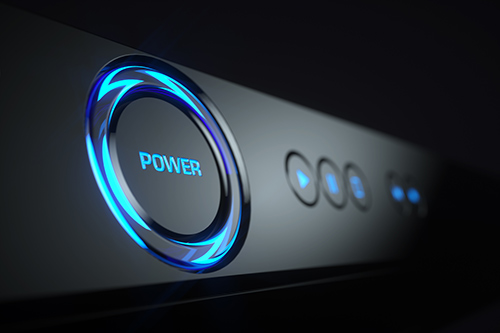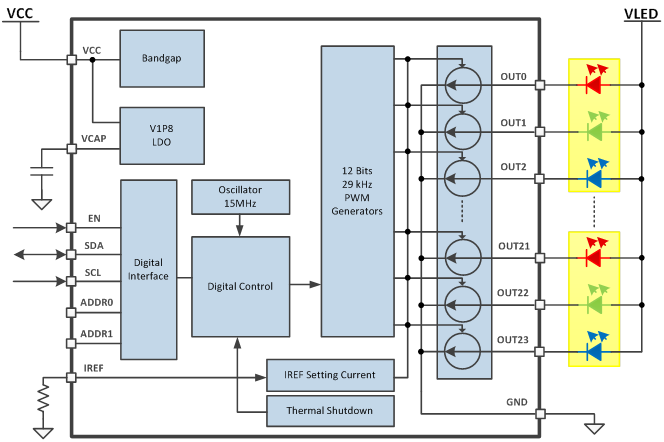Products are becoming very intelligent and connected with each other. Devices such as speakers, TVs, refrigerators, set-top boxes and smoke detectors are no longer objects that just sit there – users can control them remotely or through voice wakeup. Devices are much smarter than before, which means they will also require an improved human-machine interface.
A light-emitting diode (LED) indicator like an LED ring, LED matrix or red-green-blue (RGB) LED lighting interacts with users by changing patterns, such as chasing or blinking. Figure 1 shows some pattern examples.
Figure 1: Examples of LEDs used for a human machine interface
To have a very friendly human-machine interface, these elements are important:
- Perfect color mixing, with the color changing at the user’s request.
- Smooth LED brightness: not too dark during the day and not too bright at night.
- Nice dynamic changing effects, like chasing or blinking.
- Power efficient in case the power comes from a battery.
While at first this list may seem daunting, all you need to generate great LED effects is a smart LED driver with these key features:
- The ability to drive multiple channels with a proper communication protocol like I2C. A microcontroller (MCU) could talk to this device and control each channel independently, without consuming a lot of general-purpose input/output.
- High-resolution pulse-width modulation (PWM) control for changing the brightness of the LEDs.
- A very low quiescent current, as well as a proper power-saving mode.
- High-frequency pulse-width modulation to avoid audible noise, since many LED indicators are used with speakers.
TI’s LP50xx family of multichannel, RGB LED drivers, shown in Figure 2, is a good fit with this feature list.
Figure 2: LP50xx family functional block
The devices integrate a 12-bit PWM generator that operates above a human-audible frequency, at 29 kHz per channel, enabling smooth, vivid color with zero audible noise. 18-, 24-, 30- and 36-channel options provide independent color mixing and brightness control. With an integrated power-saving mode, these LED drivers dramatically reduce power consumption to improve total system efficiency in standby mode.
The LP50xx family enables you to achieve seamless, smooth animation in applications that use a human-machine interface, such as portable electronics, building automation and appliances.
Additional resources
- Jump-start your design with the “Various LED Ring Lighting Patterns” reference design.
- Watch the video, “LP50X LED drivers: achieve optimal color and brightness with zero audible noise.”
- Download the LP5024 and LP5018 PSpice transient model.




